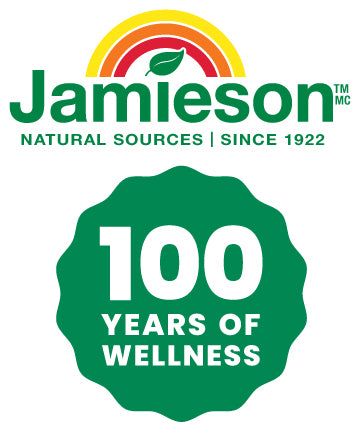It’s no doubt that the body changes with aging - joints get “creaky”, skin gets saggy, and you lose a few inches. But aging goes beyond joints and appearance; scientists are now discovering how aging impacts the immune system.
The Immune System, Explained
The immune system is a well-oiled system that surveils the body for any foreign invaders- like bacteria and viruses – and builds a response to effectively kill intruders. The immune system often works undercover, destroying bugs before signs and symptoms even appear. Creating antibodies, remembering previous infections, protective inflammation, and wound healing are also included in this system’s job description.1
What is Immunosenescence?
Immunosenescence is a process that occurs during aging and causes the immune system to become dysfunctional. This leads to a weakened immune system, meaning more frequent infections, development of autoimmune diseases and cancers.2
This process begins when the thymus – an immune cell-producing gland located in the chest – stops producing T cells. T cells circulate the body looking for invaders, both new and old, and ensure all cells are replicating and maturing appropriately.3 Later in life, T cells are produced less and the ones that are around, don’t work as well.
Signs that the Immune system is aging:1
- Reactivation of viral infections like shingles
- Catching cold & flus more frequently
- Slower wound healing
- Diagnosis of chronic diseases like osteoarthritis and atherosclerosis
Inflammageing
Another key factor in immosenescnece is inflammation. Naturally, inflammation is the first line of defense against foreign invaders and is tightly regulated by the immune system. Later in life, short-term inflammation can turn into long-term, low-grade inflammation, also known as inflammageing.4 The jury is out about what begins first, inflammation or immune dysregulation, but what we know to be true is that low-grade inflammation is higher in older adults and is a factor in age-related chronic conditions like atherosclerosis and diabetes.4
DNA Damage5
Specific parts of the DNA change late in life. Telomeres, DNA proteins, shorten with time and can cause cellular dysfunction, or even worse, cellular death. Some scientists and researchers link the health of telomeres to an individual’s biological clock and pace of aging. This is because telomere length is closely associated with developing chronic conditions and overall lifespan. Aging isn’t the only factor that impacts how fast DNA changes. Lifestyle factors such as smoking, lack of physical activity, obesity, and stress also play a role in telomere changes and pace of aging.
What’s next?
Although you can’t reverse the signs of aging, you can support the aging process. Here’s how:
- Get moving: Research shows that the more active you are, the better your immune system’s surveillance mechanism can work. Physical activity can also help keep inflammation at bay.6
- Eat well: Diet and DNA damage go hand in hand. Eating a diet rich in antioxidants can fight off oxidative stress – a leading cause of DNA damage.5 Foods like leafy vegetables, oranges, berries, and peppers should be consumed often.
- Stress less: Being stressed out unleashes the immune-suppressing hormone: cortisol. The body prioritizes other mechanisms for survival and puts immune function on the back burner. Make sure you’re managing stress by meditating, and enjoying hobbies and activities that help decrease the load.7
- Try immune-boosting nutrients: Vitamin C, vitamin D, and zinc are important supplements to add to your daily health routine.
- Vitamin C is your ace in hand when it comes to immune prevention. Vitamin C (ascorbic acid) plays an important role in immune cell function.8 Humans are not able to make vitamin C on their own, making it essential to get it from diet or supplementation.9
- Vitamin D is a fat soluble vitamin that can modulate your immune responses. Deficiency in vitamin D is associated with decreased immunity as well as increased susceptibility to infection.10
- Zinc is a mineral that can prevent a cold & flu from being drawn out too long. Zinc works by preventing the virus from multiplying in the body, giving your immune system a break from fighting the infection.11
References:
- Weyand CM, Goronzy JJ. Aging of the Immune System. Mechanisms and Therapeutic Targets. Ann Am Thorac Soc. 2016 Dec;13 Suppl 5(Suppl 5):S422-S428. doi: 10.1513/AnnalsATS.201602-095AW. PMID: 28005419; PMCID: PMC5291468.
- Lian, J., Yue, Y., Yu, W. et al. Immunosenescence: a key player in cancer development. J Hematol Oncol 13, 151 (2020). https://doi.org/10.1186/s13045-020-00986-z
- Henderson, S. R. R. by E. (2021, March 30). What are T cells? News. Retrieved November 3, 2022, from https://www.news-medical.net/health/What-are-T-Cells.aspx
- Chung HY, Kim DH, Lee EK, Chung KW, Chung S, Lee B, Seo AY, Chung JH, Jung YS, Im E, Lee J, Kim ND, Choi YJ, Im DS, Yu BP. Redefining Chronic Inflammation in Aging and Age-Related Diseases: Proposal of the Senoinflammation Concept. Aging Dis. 2019 Apr 1;10(2):367-382. doi: 10.14336/AD.2018.0324. PMID: 31011483; PMCID: PMC6457053.
- Shammas MA. Telomeres, lifestyle, cancer, and aging. Curr Opin Clin Nutr Metab Care. 2011 Jan;14(1):28-34. doi: 10.1097/MCO.0b013e32834121b1. PMID: 21102320; PMCID: PMC3370421.
- Laddu DR, Lavie CJ, Phillips SA, Arena R. Physical activity for immunity protection: Inoculating populations with healthy living medicine in preparation for the next pandemic. Prog Cardiovasc Dis. 2021 Jan-Feb;64:102-104. doi: 10.1016/j.pcad.2020.04.006. Epub 2020 Apr 9. PMID: 32278694; PMCID: PMC7195025.
- Higuera, V. (2019, January 11). 8 immune system boosting tips for older adults. Healthline. Retrieved November 3, 2022, from https://www.healthline.com/health/flu/boost-immune-system-over-65#get-plenty-of-sleep
- Vitamin C. Harvarch T.H. Chan. (2020, March). Retrieved November 3, 2022, from https://www.hsph.harvard.edu/nutritionsource/vitamin-c/#:~:text=There%20is%20interest%20in%20the,activity%20of%20white%20blood%20cells.
- CL, Van Schaftingen E. Vitamin C: Biosynthesis, recycling and degradation in mammals. FEBS J (2007) 274:1–22. doi: 10.1111/j.1742-4658.2006.05607
- Aranow C. (2011). Vitamin D and the immune system. Journal of investigative medicine : the official publication of the American Federation for Clinical Research, 59(6), 881–886. https://doi.org/10.2310/JIM.0b013e31821b8755
- Science, M., Johnstone, J., Roth, D. E., Guyatt, G., & Loeb, M. (2012). Zinc for the treatment of the common cold: A systematic review and meta-analysis of randomized controlled trials. Canadian Medical Association Journal, 184(10). https://doi.org/10.1503/cmaj.111990




